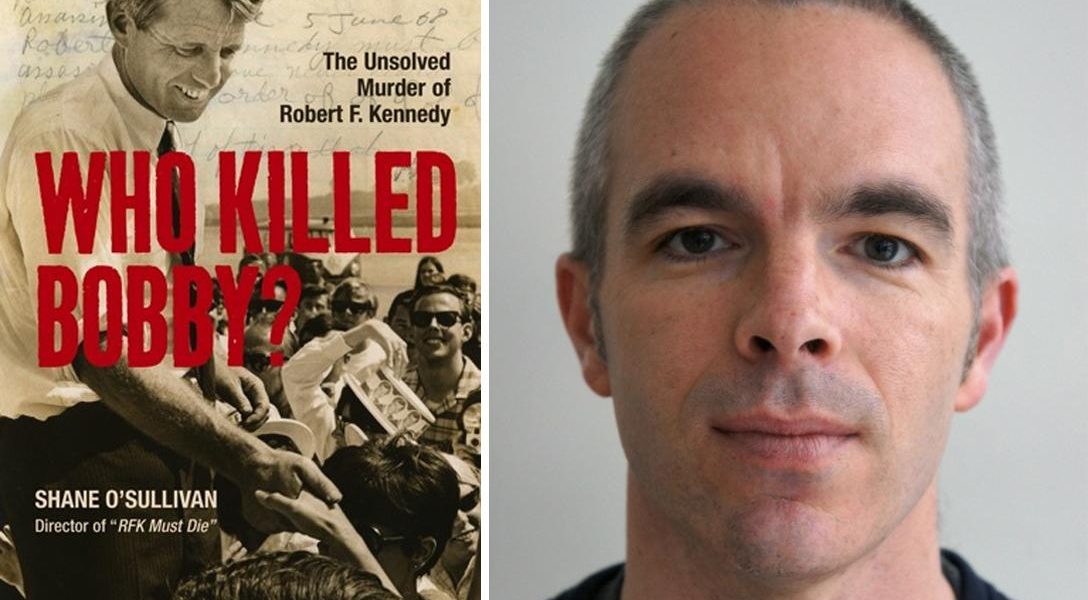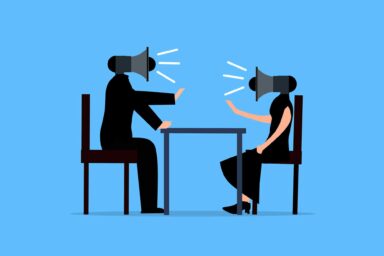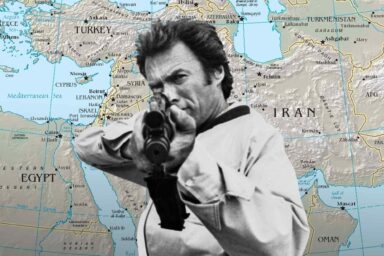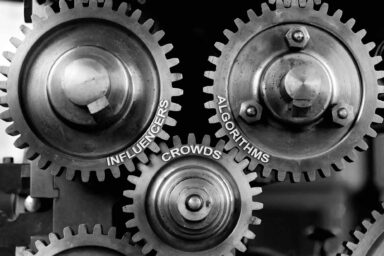Sirhan: A “Manchurian Candidate” in the RFK Assassination?
48 Years and More Evidence that Sirhan Doesn’t Deserve Blame for RFK Death
Parole hearing number 14 for Sirhan Sirhan may have finally launched a search for the truth behind Robert F. Kennedy’s murder.
Forty-eight years ago (in 1968), the country was in the midst of another presidential campaign that came at a seminal moment in American history. Five years earlier, John F. Kennedy had been murdered, and Dr. Martin Luther King had been assassinated in April of 1968. The Vietnam War was escalating. Race riots were becoming a fact of urban life. Racial and generational politics as well as social issues were threatening to tear the country apart.
Then on the night of June 5th, 1968, after John Kennedy’s brother Robert had won the all-important California Primary, America got yet another jolt: the younger Kennedy, too, had been struck down.
Flash forward to 2016.
Last week, his alleged killer, Sirhan Sirhan, was up for his 14th parole hearing. Sitting in the audience was Paul Schrade, one of RFK’s closest confidantes — who was also shot during the attack; Schrade, now 91, is interesting for many reasons, not the least of which is his conclusion that, assuming Sirhan was one of the shooters that night, he was not the only one. Moreover, if Sirhan fired any shots, Schrade is quite certain that the young Palestinian-American, once again being denied parole, could not have killed RFK — because it was a physical impossibility.
Author and filmmaker Shane O’Sullivan has spent 12 years examining how Sirhan might have been “programmed”, and by whom; scrutinizing the failures of the Los Angeles Police Department; bringing forth the sound and ballistic evidence showing 14 separate shots were fired; and publicizing the efforts by RFK friend Schrade to reopen the investigation. In this podcast, he talks to WhoWhatWhy’s Jeff Schectman about where the fact trail points.
Click HERE to Download Mp3
Related front page panorama photo credit: Adapted by WhoWhatWhy from RFK Must Die (Wikipedia), Portion of the most famous page of Sirhan Sirhan’s notebook (California State Archives) and sound wave (John Baer / Flickr – CC BY-SA 2.0)
Full Text Transcript of Audio:
Jeff Schechtman: Welcome to the program, I’m Jeff Schechtman. 48 years ago we were in the midst of another presidential campaign not unlike the one we’re in now. Many felt it was a very seminal moment in American history. JFK and Martin Luther King had been assassinated, the Vietnam War was escalating and race riots were becoming a fact of urban life. Racial and generational politics and social issues were tearing the country apart. Richard Nixon represented what he perceived as the silent majority, and Hubert Humphrey represented the Democratic establishment, and Bobby Kennedy had parachuted in to replace Eugene McCarthy as the great white hope of stitching the country back together. Then on the night of June 5, 1968 after winning the all-important California primary, Bobby was assassinated. Last week his alleged assassin, Sirhan Sirhan, was once again up for his 14th parole hearing. Attending were some of Bobby’s closest confidants who still believe Sirhan was not the single shooter and not the one who fired the shot that took Bobby Kennedy’s life. My guest today on Who What Why is author and filmmaker Shane O’Sullivan, who spent years researching Bobby Kennedy’s death. He’s the author of the book, Who Killed Bobby, and the film, RFK Must Die. It is my pleasure to welcome Shane O’Sullivan to the program. Shane, thanks so much for joining us.
Shane O’Sullivan: You’re very welcome, pleasure to speak to you, sir.
Jeff: It’s great to have you here. What was it originally that drew you into this story, Shane, many years ago?
Shane: I first got involved about 12 years or so ago, and even though I’m from Ireland, I didn’t know the Kennedy assassination story that well, but my wife was researching a program on Kennedy conspiracy theories for Japanese television, believe it or not, and that’s when I first heard about Sirhan Sirhan and some of the mysteries around the assassination of Bobby Kennedy. And in researching that, originally I was working as a screenplay writer and I had to make a fantastic adapted screenplay. But the more I researched it, and the more I tried to find out what was the ending to the story, and that kind of led to my own research and led me towards making the documentary, RFK Must Die.
Jeff: And as you dug into making the documentary and began to examine the ballistic evidence, what had happened with the LAPD in the LA district attorney’s office. Talk about what moved you from thinking that this was more than another conspiracy story to really something that where the facts had just not come out in this case.
Shane: Sure, first of all, the time lapse between the assassination itself and the release of all the police investigation files is what’s kind of hampered took the implications away, because it took 20 years of provocation and protest by Paul Schrade, the guy who was in the news this week, and who was shot in the head on the night of the assassination. He’s basically been leading the campaign to reopen the case for 40 years and one of the things that he was able to do is get the LAPD to release the files in 1988. What they show is that, Sirhan, according to all the witness testimony and that was gathered by the police at the time and the FBI. All of the witness statements put the barrel of Sirhan’s gun two to six feet in front of Kennedy. Whereas the autopsy clearly states that the fatal shot was fired from one inch behind Kennedy’s right ear. So that sets up one of the key aspects of the case in terms of two potential firing positions. Sirhan in front of Kennedy, several feet in front. Several of the witnesses who were actually trying to restrain Sirhan, said his gun was never in the position described in the autopsy, an inch behind Kennedy’s right ear. And then you have the person who was actually behind Kennedy and possibly in a position to fire the shot who was a part-time security guard called Thane Eugene Cesar, who was the subject of a feature documentary in the early 70s that introduced the second gun theory to the case. And you know, he was interviewed for this film called, ‘The Second Gun’, by Ted Charach, and he was very right-wing, he was very against Kennedy, and he seemed kind of amused looking back at the whole assassination and his place in it. I guess a lot of these things kind of got my interest, as well as the kind of the mystery around Sirhan’s recall of the shooting. He has no memory of the shooting itself. All he remembers consistently over the years is being led into a dark place by a girl who wanted coffee. He later found out that this dark place was the pantry, and he really has no memory, or kind of blackout in his memory between that point when he went into the dark place with the girl who wanted coffee and he was being choked on the steam table after the first round shot had gone off from his gun. And he’s been very consistent with that for nearly 48 years. I can see no reason why he would lie about it because in the sense it’s hampering his case and hampering his chance of parole. Because if he did remember, and he did recall, he could make a full confession and he would easier meet the parole criteria. But as it is because he can’t recall and because this is been verified by the psychologist who worked him over the years, and it sort of sets up a Catch-22 situation, because had he expressed full remorse, or had he expressed full insight into your crime if he cannot actually remember committing it, which really goes to the core of what he’s been struggling with in the parole process last week.
Jeff: What have psychologist said with respect to this repressed memory that could have been from the trauma of the event the way the event went down or has the assumption been that there is something else that has prevented his recall?
Shane: We know much better today than we knew I guess 48 years ago, and that trauma obviously can play a part in that and that may be one thing to attributed it to. But I think the psychologists and psychiatrists who worked with him in the most detail are convinced that he was in a hypnotic state on the night of the shooting and during the shooting itself. It may sound very far-fetched but back at the time Sirhan was very much into mysticism and self-hypnosis. And he would spend a lot of time in his room hypnotizing himself in front of the mirror and then writing as various phrases in his notebook as a means of cost control or mind control. And so the theory was back in his trial by this defense psychiatrist, Dr. Bernard Diamond, that the mirrors along the hallways in the hotel had somehow triggered him into this trance and he had acted out some of the writings in his notebook, “RFK must die, RFK must die,” repeatedly. He had kind of gone into that trance state, and kind of reenacted some of these writings and realized them in the pantry when he saw Bobby Kennedy. So the theory was that he’d almost hypnotized himself to kill Bobby Kennedy and the motivation for that would be that Kennedy had agreed or had pledged during his campaign to sell 50 bombers to Israel if he had been elected the White House to replenish bombers that were lost in the Six-Day War the year before. So that was sort of the post-rationalization that the defense came up with, and at the trial it was kind of laughed out of court at the time because it seemed so far-fetched, and there was nothing on the records to indicate that hypnosis had ever played a role in this kind of assassination. But we know a lot more later on in the 70s when Congressional hearings established that the CIA and other agencies were trying to do just that in 50s to create programs, hypno-program assassins, who could be programmed to assassinate and have no memory of actually having done it. So I think that after the trial some of the psychiatrists who looked at Sirhan were more aware of that context and I guess later on saw him as the closest we have to a real-life manchurian candidate in terms of some of these ideas of what the CIA were trying to do in the 50s, and how either CIA or other kind of rogue individuals may have gotten to Sirhan in advance of the assassination.
Jeff: Is there any evidence that has come out as to who Sirhan Sirhan may have had contact with that might have somehow been responsible or directly or indirectly responsible for any kind of hypnosis and/or programming?
Shane: I think that’s the gap at the moment. We don’t know who it was. We know that he was away from home and he wasn’t away from home for any lengths of time in the months leading up to the assassination but he was for several months away from home at a ranch when he was trying to establish himself as a jockey two years before the assassination. He had a fall from a horse, which you know according to the medical records, and he only had a brief stay at the hospital and he had some minor eye damage and apparently he was fine. According to his mother and his best friend he went missing for two weeks. So I think Dr. Daniel Brown who has worked with Sirhan over the last five years to try and help him with his recall of his memory and try to piece together and if there is such a context of people working with him to program him for the assassination, they suspect that experience two years beforehand may have been the start of that process. But they really haven’t been able to nail it down in a formal way. I think the strongest evidence we have is that there may have been others involved in terms of this hypnotic conditioning and it’s that fact that Sirhan in the last five years and during his work with Dr. Daniel Brown from Harvard Medical School, and at least three times during their sessions together when he’s been put in a hypnotic trance, he’s kind of reenacted the range mode of basically being in a hypnotic trance seeing firing targets in front of his eyes, then taking a firing position and shooting. So he’s actually reenacted the possible programming he was under at the time of the assassination. I know it sounds very far-fetched, but this is actually stuff that he has reenacted in the last five years for Dr. Daniel Brown in the California prison system. So it’s obviously there in his psyche, even 40 odd years later. And was then in the declaration in support of his habeas corpus to petitioners and his attorneys had petitioned the courts with, in the last 5 to 6 years, and also was put before the parole board, both back in 2011 and there was a new declaration submitted to the parole board last week.
Jeff: There is no question that Sirhan did attempt to assassinate Bobby Kennedy, that he was there in the pantry, that he fired quite a few shots. And the question is, whether there was a second shooter?
Shane: We know that Sirhan was there, we know he fired his gun eight times, but you know in terms of a second gun being there the strongest evidence to that is something called the Pruszynski recording which is the only known audio recording of the shooting that night, and it’s been lying in the California State archives kind of undiscovered for many years. And then a former CNN senior writer, Brad Johnson, discovered it in 2004. He got in touch with a forensic audio expert called Philip Van Praag who did a very detailed analysis over it for several months and came up with some very key discoveries of what the recording contains. The first was that there were 13 shot sounds in the key portion of the recording when shooting was actually taking place. Then when he analyzed them in more detail he found two double shot intervals which means basically that there were two shots so close together that they couldn’t have come from the same gun because even the best shooter couldn’t have fired two shots as quickly as is evident on the tape from a gun, which is one indication of the second gun. And also through various frequency anomalies for those particular thirteen shot sounds, he was able to separate how many came from Sirhan’s gun and how many came from a second gun, and the fact that those two different guns were firing in opposite directions. So if we put all this together we see that eight of the shots according to the frequency anomaly analysis, eight of the shots could be put down to Sirhan’s gun, which is firing several feet in front of Kennedy, and five shots were fired from behind Kennedy in the opposite direction towards Sirhan, and five of them came from behind Kennedy, including the four that shot him including the fatal shot wound behind the right ear. So it’s kind of an astonishing piece of work that Philip Van Praag has been doing on that, and that it is the strongest evidence I feel that there were two guns in the pantry and that 13 shots were fired and that Sirhan in all likelihood missed Kennedy and the fatal shot came from the second shooter behind.
Jeff: Talk a little bit about the ballistic evidence in the pantry, the number of shots, the number of people that were hit, bullets that were found, the damage that was found in the pantry, and the LAPD investigation into this.
Shane: Well, again Paul Schrade kind of holds the key to that in a sense because he was walking six to eight feet behind Robert Kennedy, Jr., through the pantry when the shooting started and all the evidence suggests that Paul Schrade was actually the first person hit probably by one of Sirhan’s bullets, and so because one of the two witnesses who was right next to Sirhan, kind of between Sirhan and Paul Schrade at the time. He saw Paul Schrade fall first and then he saw Sen. Kennedy fall after that. And the fatal shot that hit Kennedy coming from an inch behind his right ear. So, once he was hit with that fatal shot he would’ve collapsed to the floor. So basically all the indications are that Paul Schrade was hit first, then Kennedy fell, and then there were several other people injured in the crossfire. So if we look at how and the LAPD criminalist Dwayne Wolfer accounted for the eight shots from Sirhan’s gun, one key error that he made was that the bullet that hit Paul Schrade according to Wolfer, went through the suit coat of Kennedy, and went up through the lining without entering Kennedy’s body and hit Paul Schrade in the head. So he had a very tight accounting of the bullets. Wolfer had a problem because there were four bullets fired at Kennedy, three hit his body, one went through his suit coat, and five others were injured. So in essence, for a potential nine shots that had to be accounted for, with eight bullets from Sirhan’s gun, so how were they going to do that? So the magic bullet, if you like. in this case was the one that was fired at an upward angle through Kennedy’s suit jacket without entering his body, and going through the shoulder pad of his coat, and then according to Wolfer, hitting Paul Schrade in the head. Now as I’ve already said, Schrade was walking six to eight feet behind Kennedy through the pantry, so for that bullet to go through the shoulder pad of Kennedy’s jacket and hit him in the head, as he said himself he’d have to be 9 feet tall or literally sitting on Kennedy’s shoulder when the shooting happened. It’s just absurd. So one of the benefits of the LAPD files being released in ‘88 was we could see some of the creative accounting that LAPD were doing in the case to basically make the evidence fit their version of the crime. And you can see that there was very little margin for error. And on top of that, we have FBI agent William Bailey who is in the pantry a couple of hours after the shooting, and two bullets he had been taken out of the center divider in the pantry door frame. This center divider of the pantry doorframe was basically the door that Kennedy had come through when he had come off the stage and walked into the pantry. Probably these bullets came from Sirhan’s gun because he was firing in that direction as Kennedy was walking towards him, and all the evidence says that he missed Kennedy with those bullets, they injured bystanders instead. If we look at that accounting then, we’ve got two bullets in the pantry center divider, of the pantry doorframe. We’ve got eight bullets in Sirhan’s gun. We’ve got a rogue bullet that’s not accounted for because Wolfer’s accounting of the one that went through Kennedy’s suit coat and hit Schrade doesn’t make any sense. So already we’re up to possibly 11 bullets there. So you can see that when we put that together with the Pruszynski recording, 13 shot sounds that Philip Van Praag had found in the recording, and at a very early stage LAPD had some indication of the nature of the damage, that it was more than just Sirhan’s gun. And they just, you know, they refuse to admit or follow up with it in any proper way. There was an indication with Sandra Serrano, that there was a girl with a polka dot dress in the pantry, and she was seen by Vincent Di Pierro with Sirhan in the pantry during the shooting. She was seen fleeing down a fire escape by Sandra Serrano after the shooting. But again, LAPD just tried to shut that down, that side of the investigation, and stick to the lone gun theory throughout.
Jeff: There is a video that exists of the chaos that took place in the pantry. Talk a little bit about that and whether that video has been revealing in any way.
Shane: Well, in a sense it’s been misleading because people get the sense that, “Oh, you know, I saw Bobby Kennedy being killed live on television,” because they’ve seen the chaos in the pantry and they assume that when the shooting was taking place, the nature of television documentaries, sometimes they put fake gunshots on the footage to just kind of jazz it up. But really, it doesn’t tell us very much other than that you know I think later the police said that there were up to 77 people in that pantry in a very low ceiling, small confined space. So I guess what it does tell us is that if there was a second gunman in there literally at conflict distance from Kennedy, with a gun, an inch behind his right ear, it would be very difficult to see who it was, if it was professional. If it were a professional hitman, and they were able to do the shot at an upward angle to do the damage from a concealed gun and then be spirited out from the pantry without anybody really seeing in the confusion what was going on. And obviously Sirhan drawing all the attention because he was out there waving his gun and everybody went to try and restrain him and bang his gun on the steam table. The maître d’ called Uecker who was leading Kennedy through the pantry insisted that after two shots, Sirhan’s gun was now diverted from Kennedy. So he was firing wildly and down through the pantry and hit some the other bystanders and probably, possibly the bullets in the center divider would be from Sirhan’s gun. Really, it was a very frenzied situation where it would be no surprise if a professional hitman were able to escape quite easily and basically without leaving any trace at the time.
Jeff: I guess the question is just as there has been computer analysis of the sound that was found, whether or not computer enhancement, computer analysis of the video might be more revealing today 48 years later.
Shane: Obviously well, that’s the $64 question. It would be great if the video was revealing but I don’t think it’s of sufficient resolution, or sufficiently well lit to really give us very much. Obviously if we found another audio recording of the gunshots, that would further corroborate the findings of the Pruszynski recording that will be very helpful. And even just reading the autopsy report today, if it was possible to look at some of the fragments of the bullet that penetrated Kennedy’s brain. You know, this bullet basically mushroomed and fragmented into many, many different tiny pieces. If it was possible to kind of establish what was the caliber of bullet and what was the make of bullet and so on and possibly that might be of some help. But it’s very, very difficult, there’s a finite amount that we could do at this stage and we have to accept that.
Jeff: Talk a little bit about Paul Schrade and all those that want to see this case reopened and really have shown up at the various parole hearings for Sirhan Sirhan.
Shane: Part of the project that I’ve just been doing and actually releasing the history of all of the transcripts of Sirhan’s parole hearings dating back to the mid-70s, and really nobody has shown for the parole hearings. Well, people have been asking for a new investigation, including myself, we’ve kind of ignored the parole hearing process and what information it can give us about the case. Now all of those parole hearing transcripts are online and you can go back and browse them at leisure. This is the first time William Weisel, one of the shooting victims, went to the last parole hearing in 2011 and he told them that “You know, I was one of the shooting victims on the night and I’m told Sirhan’s been making a lot of progress in prison and I would have no problem if you just judged him eligible for parole,” but the parole boards ignored him and they denied Sirhan again in 2011. But now Paul Schrade has taken it up a level by appearing at this year’s hearing because here we have a very close friend of Bobby Kennedy and it was his labor chair in ‘68 and campaigned for him throughout California and was actually on stage with Bobby Kennedy and publically thanked during the victory speech just minutes before Bobby Kennedy was shot. Of course he was shot himself in the head, and maybe millimeters, he might’ve been killed as well. So it says a lot if he feels so strongly about reopening the case and about Sirhan’s innocence, and that he comes to the parole hearing. And by all accounts, gave a fairly blistering performance and in terms of telling the parole boards the facts of the case, the way they need to be looked at again, and you know how it might affect Sirhan’s parole. So you know, I think it’s very significant that he was there. And also we have evidence now that perhaps some members of the Kennedy family are beginning to share the same view because one of the documents that Paul Schrade brought to the parole board last week was a letter from Bobby Kennedy, Jr., asking the Attorney General, Eric Holder, back in 2012, to support Paul’s efforts to reopen the case. And as far as I can determine, that support is still there from Bobby Kennedy, Jr., that he would like to support Paul Schrade and efforts to get his father’s case re-investigated by the LA County district attorney. I guess now that’s the next phase of our efforts after Sirhan’s latest denial.
Jeff: Is it your sense that even if the case were to be reopened at this point that they would be anything conclusive from that effort that would lead to really any kind of revelation that’s different than what’s out there now?
Shane: Obviously it opens up a very big can of worms because there’s no guarantee that we can find who’d done this. There’s no guarantee that we can find who programmed Sirhan or who the second shooter was. But we can, you know, I guess in a limited sense establish that Sirhan should never have been convicted of first-degree murder because he probably didn’t fire the fatal shot that killed Bobby Kennedy, and he certainly wasn’t in any mental state to take full responsibility for the crime, and all the indications are from the psychiatrist who worked with him most closely over the years that, you know, he was in a hypnotic state at the time and whether that was a state of self-hypnosis or whether there were third parties involved, and he certainly shouldn’t have been convicted of first-degree murder at the time. And even if it’s a first-degree murder conviction, make him eligible for parole in the early ‘80s, and that he was actually due for release in 1984, until a political campaign in California and basically led to that parole being rescinded. So I think at a minimum we can say that Sirhan Sirhan should no longer be in prison and he’s really being kept as a political prisoner because there isn’t the political will to reinvestigate the case, and say whether if Sirhan wasn’t guilty, then it was somebody else, even if we can’t find that somebody else, we have to give Sirhan the full weight the law, in terms of applying it to his case and letting him live the last years of his life as a is a free man. And even if we can’t tie up the case and find that you did everything, that you know, just the system should give him due process in terms of looking at his individual responsibility and reinvestigating the others who may have been involved.
Jeff: Shane O’Sullivan, I thank you so much for spending time with us today on Radio Who What Why.
Shane: It’s been a pleasure, thank you.
Jeff: And thank you for listening and joining us here on Radio Who What Why. I hope you join us next week for another Radio Who What Why podcast. I’m Jeff Schechtman. You like this podcast? Please feel free to share and help other people find it by rating and reviewing it on iTunes. You can also support this podcast and all the work we do by going to whowhatwhy.org/donate.





